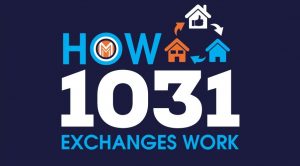Loan Products – The Pro’s, Con’s & What’s Right for You
When it comes to buying a home or refinancing your existing mortgage, there are many loan options and many factors that help determine what’s right for you. Not only should you consider goals as a home owner today, but also look to the future. Where do you see yourself in the next five, ten and fifteen years? How about your job? Are you in a salary position or on a commission structure? Do you have children? Do you see your family growing in the short and long term? Have you started saving for your children’s college education? These are just a few things to consider and talk to your mortgage consultant about.
The most typical loan product is the 30 Year Fixed mortgage. With this product your interest rate is fixed for the full 360 month term. While your mortgage payment doesn’t change, the amount of interest and principal does each month. Since you only pay interest on the loan balance, the interest portion of your payment goes down and the portion of your mortgage payment allocated towards principal goes up. This is called amortization; the cost of the loan spread over the loan term. Since the 30 Year Fixed allows you to repay the loan over 30 years, it will have a lower monthly payment than say a 15 or 20 Year Fixed. This keeps your payment down in comparison, but you will be paying much more interest over the life of loan compared to a shorter term mortgage. Even if you can afford a 15 Year Fixed payment, you need to ask yourself what’s more important, expedite paying down your mortgage while building equity or a higher cash flow with the lower mortgage payment.
Let’s look at the 15 Year Fixed compared to a 30 Year Fixed. Using a $300,000 loan amount and a 4.000% interest rate on a 30 Year Fixed mortgage, the principal and interest payment is $1,432 per month. A 15 Year Fixed rate of 3.5000% – Yes, rates are typically lower on the shorter term product – with the same loan amount of $300,000 equates to principal and interest payment of $2,144 per month. That’s a $712 swing in monthly payment. While that sounds like a substantial difference in payment, the interest paid over the life of the 30 Year Fixed is $215,607 and just $80,036 on the 15 Year Fixed. That is savings of more than $135,000. However, not everyone can afford the 15 Year Fixed, especially when you add in your property taxes and homeowners insurance premium. Even if you can afford it, you may have certain expenses coming up that need to be considered. Do you anticipate a new car payment, a job change, or are of your children going to have a school expense? Maybe you simply want the peace of mind that if something unexpected comes up, you’ll have a more comfortable mortgage payment. Whatever your reasons are, everybody’s life situation is different.
What about the Adjustable Rate Mortgages (ARMs) that received a lot of bad press in recent years? How does it work and is it a risky product? Typically an ARM product has a fixed term and then can adjust at a future date. For example, a 5 Year ARM is fixed for 5 Years and then can adjust at the start of year 6. Just like the 30 Year Fixed, it is amortized over 360 months but the interest rates are usually lower than the 30 Year Fixed. Therefore you pay less interest and have a long term loan to provide an overall lower monthly payment. The interest rate can adjust to a margin plus an index and has a cap of how much it can adjust annually and over the life of the loan. Typical ARM products are 5, 7 and 10 Year ARMs. This is where you ask yourself where you see yourself living in the next 5, 7 or 10 years. Hypothetically, let’s say you and your partner are buying condo in the city and plan to start a family in the next 5 years. You’ve discussed your life goals and decide that you want to save up for long term home in the suburbs. The 7 Year Arm might be a great option for you. Your rate will not adjust over the time frame you own and live in the condo, minimizing your risk of a rate adjustment, and with a lower interest rate than that of a 30 Year Fixed, you will maximize your savings. The ARM products received a bad reputation years ago as many loans began to adjust upward with the “collapse” of the housing market. Due to the deteriorating market, people didn’t have the equity in their homes to refinance out of their ARM. Layered with unconventional, subprime and low documentation loans, many people struggled making their mortgage payments. However, as the housing market continues to normalize, added regulation and a more conservative approach to qualifying individuals, this is still an attractive program for qualified home buyers.
Finally, let’s look at Federal Housing Administration (FHA) and Veteran Affairs (VA) loans. Both are government sponsored and have their quirks. FHA allows for a 3.5% down payment, lower than most conventional 5% down products. They are more forgiving as it pertains to credit scores, debt-to-income ratios and interested party contributions, i.e. seller credits. Many have referred to this as a first time homebuyer program, but because of its leniency on credit scores and debt ratios, it may be the right choice for any homebuyer. The interest rates are also typically lower than that of a conventional loan. The downside is that Private Mortgage Insurance (PMI) is required to be paid for a minimum 11 years for those putting 10% or more down payment and for the life of the loan for those putting less money down. FHA also collects a mortgage insurance premium up-front when acquiring the loan. VA helps current military service members, Veterans, and eligible surviving spouses become homeowners. Since VA guarantees a portion of the loan, it enables the lender to provide favorable terms. Depending on county loan limits, most VA loans will not require a down payment. For example, in Cook County, Illinois, you can purchase a home for $424,100 and finance the entire amount. There is no PMI and the interest rate is typically lower than that of a conventional loan. The only down side of a VA loan is that you may be required to pay a funding fee at closing. This fee is rolled into your loan balance and the amount of the fee is dependent upon your down payment and the number of times you’ve received VA financing.
There are an abundance of loan programs and several ways to structure your mortgage. Since everyone’s credit score, income, down payment and debt-to-income are different, it’s important to speak to a seasoned mortgage professional that will not only walk you through your options but help guide you to what best fits you based on your current and future life goals.
Written By: Chris Ulrich – United Home Loans
NMLS# 215735







